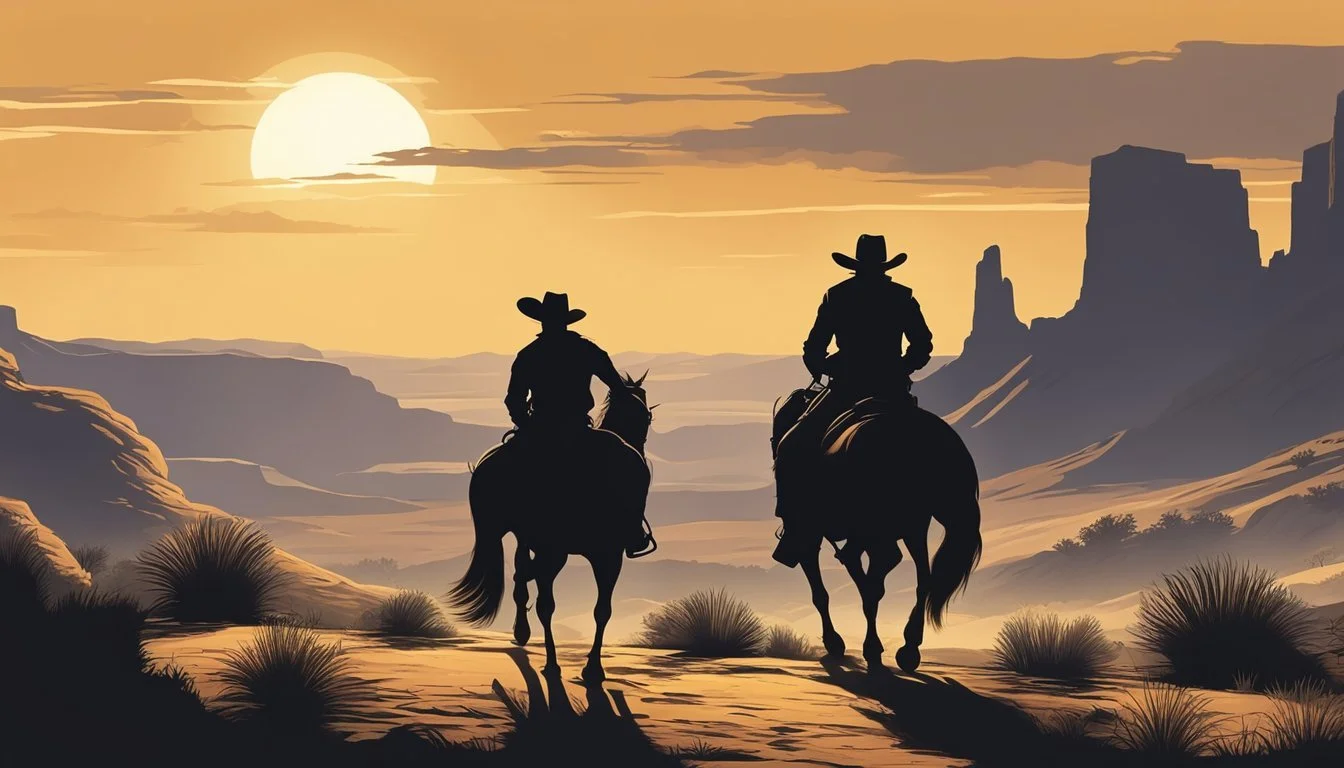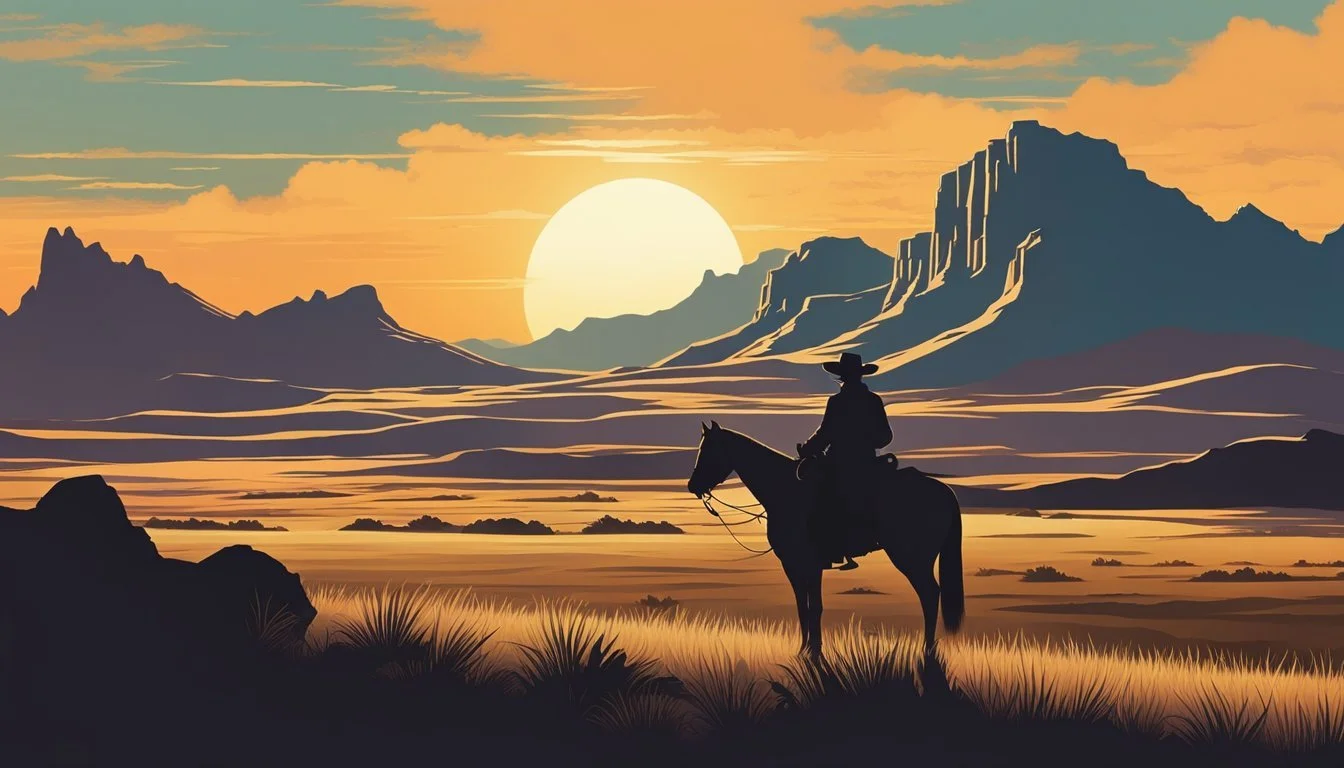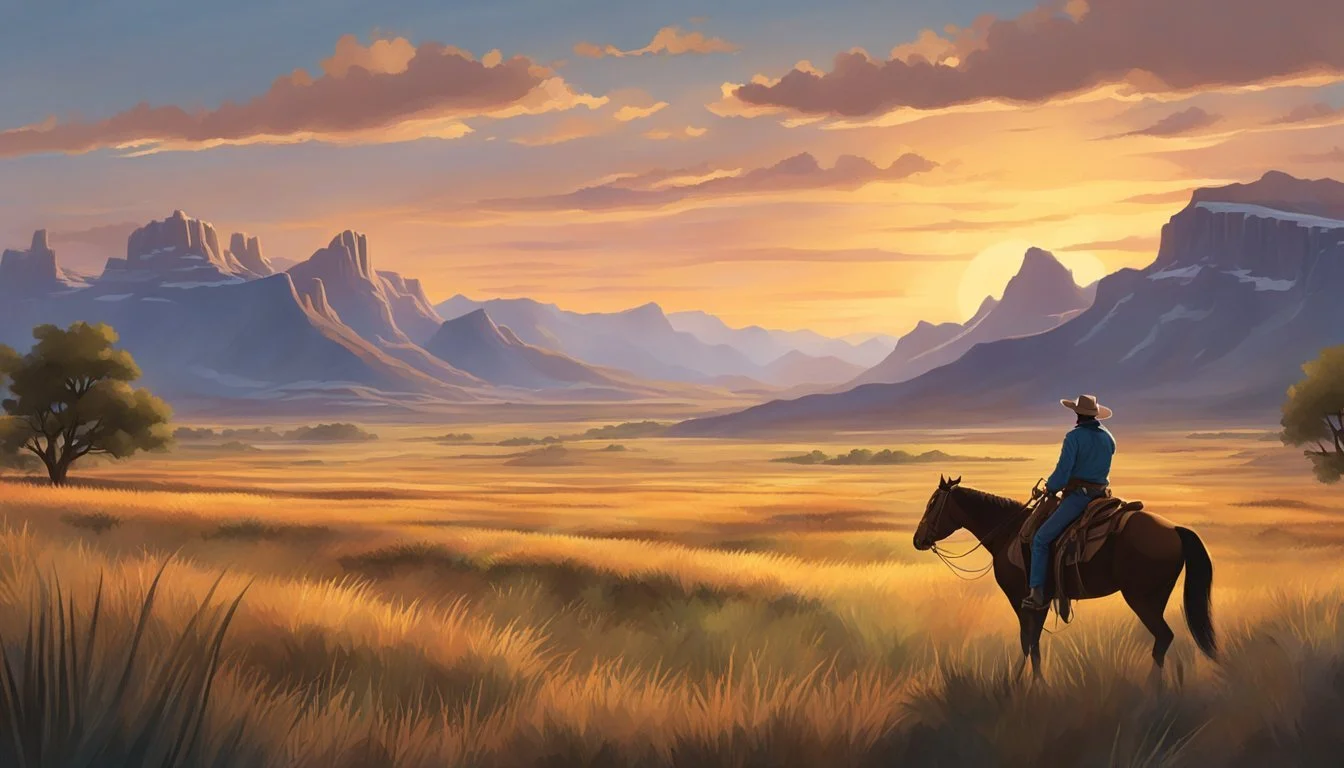The Impact of Western Films on Shaping Modern Perceptions of Cowboys and Their Lore
Western films have played a significant role in shaping the image and mythology of the cowboy in American culture. These films often portray cowboys as rugged individualists, surviving and thriving through toughness and moral certainty in the untamed American West. This portrayal taps into the cultural narrative of the West as a place of pioneer freedom and boundless opportunity, where cattle drives and town-taming gunslingers were the order of the day.
The cowboy has become an iconic symbol of American identity, reflecting both the historical reality of the American frontier and an idealized notion of it. The influence of Western films has reinforced specific characteristics of the cowboy image, such as independence, stoicism, and an unwavering sense of justice. These cinematic depictions contribute to the enduring appeal of the cowboy as a representation of American values and heritage.
However, these portrayals are also subject to scrutiny for their accuracy and impact on perceptions of American history. While Western films have undeniably helped to cement the cowboy as a national icon, they have also played a part in creating a mythologized past that blends fact with fiction. This legacy is complex, reflecting the diversity of the American experience and the ongoing evolution of the cowboy's place within it.
Origins and Evolution of the Western Genre
This section will explore how the Western genre began, how written stories laid foundations for cowboy legends, and the transition of these tales onto the silver screen.
Early Influences and Pioneers
The Western genre has its roots in the late 19th and early 20th centuries, with Edwin S. Porter's "The Great Train Robbery" (1903) widely considered as the proto-Western film. However, its influences predate Hollywood, beginning with traveling shows and wild west reenactments. Pioneers of the genre painted a romanticized vision of the cowboy as an icon of American values, often glossing over the harsher realities of frontier life.
Rise of Western Novels and Dime Novels
By intertwining fact and fiction, dime novels and later, more substantial Western novels, were instrumental in crafting the cowboy image. Writers like Zane Grey and Louis L'Amour solidified the cowboy as a figure of rugged individualism. The importance of Frederick Jackson Turner's "Frontier Thesis" cannot be overstated, as it proposed that the American character itself was defined by the experience of expanding the frontier, which resonated deeply within the cultural mythology depicted in Western narratives.
The Transition to Silver Screen Westerns
Westerns migrated from written page to film, capturing vast audiences. Directors like John Ford advanced the genre in Hollywood, portraying cowboys as heroes of the Old West, locked in battles of good versus evil amid grandiose landscapes. With masterpieces such as "Stagecoach" (1939), Ford and others entrenched the Western at the heart of America's storytelling tradition. As these movies proliferated, they became key to understanding the evolution of the cowboy legend and America's perception of its own history.
Cinematic Portrayal of Cowboys
Western films have significantly shaped the image of the cowboy, often romanticizing this figure into a symbol of American values. They have also spotlighted iconic cowboy actors and been influenced by visionary filmmakers.
The Romanticizing of the American Cowboy
Cowboys in cinema are frequently depicted as daring heroes of the untamed frontier, embodying freedom and rugged individualism. Films have played a key role in creating this idealized image, often straying from the more mundane historical realities of cowboy life, which involved laborious cattle herding and ranch work.
Iconic Cowboy Figures and Actors
John Wayne stands out as the quintessential cowboy actor. His portrayal of Ethan Edwards in The Searchers has left an indelible mark on the cinematic cowboy mythology. Wayne's characters are often stoic heroes, reinforcing the cowboy's status as an American icon through his roles in numerous Westerns.
Influence of Directors and Filmmakers
Directors such as Sergio Leone contributed a distinctly Italian perspective to the cowboy imagery through the Spaghetti Western genre. Leone's films, exemplified by his use of dramatic close-ups and extended showdowns, have forever changed the cinematic language of Westerns. Under his direction, cowboys transformed into complex anti-heroes, blurring the line between right and wrong.
Cultural and Social Impact
Western films have played a significant role in shaping both the identity of America and the perceptions of the gender and racial dynamics of the historic West. These narratives have deeply influenced popular culture, embedding themselves into the fabric of society.
Western Films and American Identity
Western films have been pivotal in crafting the mythology of the American West, often emphasizing themes of rugged individualism and freedom. Iconic actors like John Wayne epitomized this image, presenting a stoic, strong, and often morally straightforward cowboy hero. These characters have become entwined with America's national identity, symbolizing a time of expansion and the taming of the frontier. This film genre has codified the visual and thematic aspects of the Wild West into a distinct brand of Americana, influencing how the United States perceives its own cultural legacy.
Gender and Race in Western Films
Gender roles in Western films have historically been clear-cut, with male characters taking the lead as protectors and adventurers, while female characters were often relegated to roles of domestic caretakers or symbols of purity and moral virtue. Conversely, these films have also been criticized for their portrayal of Native Americans and other racial minorities, often depicted as antagonists or noble savages, which has perpetuated stereotypes and oversimplified the rich tapestry of race relations in the historic West.
Portrayal of Native Americans: Frequently cast as obstacles to be overcome by settlers and soldiers.
Gender depictions: Men are showcased as independent and self-reliant, while women are often in need of rescue or support.
These elements have significantly influenced the perception of gender and race within the context of American frontier history, despite contemporary critiques and re-evaluations of such depictions.
The Wild West in Popular Culture
The allure of the Wild West has not been limited to cinema. From Buffalo Bill's traveling shows that dramatized Western themes to dime novels and later representations in television and comic books, these stories have cemented themselves in popular culture. Elements from the Wild West have been recycled and reinterpreted across various media, contributing to a resilient, romanticized narrative of the American frontier.
Buffalo Bill: His shows serialized the West and provided visually impactful representations, blending fact and fiction.
Adaptations: Film Westerns have inspired a range of cultural products, including toys, games, and clothing, further embedding the mythology into everyday life.
Through these cultural expressions, the image of the cowboy and the myths of the Wild West continue to resonate and evolve, reflecting both the changing values of society and the enduring legacy of this era in American history.
Myth vs. Reality
Western films have played a pivotal role in shaping the imagery and mythology of the cowboy persona, sometimes at the expense of historical accuracy and the representation of Native Americans and other groups.
The Making of the Cowboy Myth
The cowboy myth emerged as a romanticized ideal of the American West, with traits of rugged individualism, bravery, and an unbridled sense of freedom. Western films bolstered this image, often downplaying the more mundane and harsher realities of frontier life. Unlike the large-scale cattle drives and gun-slinging duels frequently depicted in cinema, the life of actual cowboys was often characterized by long, grueling work days and low pay.
Myth: Cowboys as lone heroes facing the wilderness.
Fact: Many cowboys worked in teams and were part of large ranch operations.
Historical Accuracy in Westerns
When assessing historical accuracy, Westerns have a spotty record. The often portrayed lawlessness and continuous conflict of frontier towns are exaggerated for dramatic effect. In reality, the American West witnessed intervals of peace and established laws, and many towns were not as wild as depicted. Furthermore, the diversity of the cowboy population, which included Mexican vaqueros and African American cowboys, is frequently underrepresented in these films.
Fact: A significant number of cowboys were of Mexican heritage, known as vaqueros.
Representation of Native Americans and Other Groups
Native Americans have frequently been misrepresented in Western films. Early portrayals often relegated them to antagonistic roles, ignoring the complex and diverse cultures of different tribes and the impact of Western expansion on their communities. This treatment contributed to a skewed perception of Native American history. Efforts have been made in more recent years to present a more nuanced portrayal of Native Americans, their customs, and their side of the frontier experience.
Prior portrayals: Native Americans depicted as one-dimensional adversaries.
Modern efforts: Films are beginning to offer more accurate representations of Native American cultures and perspectives.
Western Films and Modern Perspectives
Western films, particularly through revisionist narratives and their influence on modern cinema, have reshaped the cowboy mythology. They explore complex themes like race relations and gun violence while reevaluating the legacy of the American Frontier.
Revisionist Westerns and Contemporary Takes
Revisionist Westerns, such as Quentin Tarantino's "Django Unchained" and "The Hateful Eight," offer a modern perspective by critiquing the archetypal heroic portrayals of cowboy figures. This subgenre commonly addresses the harsh realities of frontier life, including the depiction of racism and the revision of indigenous peoples' representation.
"Django Unchained": Focuses on the journey of a freed slave and addresses the brutality of slavery alongside Western tropes.
"The Hateful Eight": Examines post-Civil War tensions and the myth of the righteous gunslinger.
Westerns Influencing Modern Cinema
The classic Westerns of John Wayne have paved the path for contemporary films that borrow from the Western aesthetic and thematic elements. "No Country for Old Men," though not a traditional Western, utilizes the setting and moral questions often found in the genre, bringing the struggles of the American frontier into the 21st century.
John Wayne's films: Symbolized traditional Western heroism, with clear moral binaries.
"No Country for Old Men": Illustrates the blurred lines between good and evil in a modern context, akin to the complexities of the wild West.
Legacy and Critique of Western Imagery
Westerns have left an undeniable mark on the image of the cowboy and the interpretation of the American Frontier. Contemporary media, such as the TV series "The Son," delve into multi-generational tales that deconstruct the Frontier myth and question the glamorization of gun violence.
"The Son": Explores family dynasties in Texas, reflecting on the generational impact of the cowboy's decisions and actions.
Race Relations and Gun Violence: These themes are central to the critique of Westerns, shedding light on the consequences of the mythologized Wild West.
By revisiting and revising the cowboy image and mythology, modern Western films have both honored and transformed the genre, offering new insights into the complexities of American history and identity.
Influence on Art and Literature
The Western genre has significantly impacted art and literature, shaping cultural perceptions through painting, photography, and literary narratives.
Western Themes in Painting and Photography
In the realm of painting, artists like Frederic Remington are synonymous with the Western genre. Remington's works often explored the dynamism and drama of the American West, encapsulating scenes of cowboys, Native Americans, and the untamed landscape. His paintings fostered a romanticized view of the West that would echo through subsequent generations of artists.
Photography, too, played a role in disseminating the Western mythos. Historic photographs provided a visual narrative to the tales spun by painters, creating a sense of authenticity to the sweeping vistas and gritty cowboys that filled popular imagery.
Westerns' Contribution to Literature
Westerns wielded great influence over American literature with New Jersey-born author Owen Wister often hailed as the father of Western fiction. His novel, The Virginian, published in 1902, laid the foundation for the Western hero archetype—an embodiment of rugged individualism and moral fortitude. The narrative structure and character development established by Wister's writing provided a blueprint for countless stories and novels that followed, reinforcing the Western mythology of the American frontier.
Expansion of the Cowboy Image Worldwide
The iconic image of the American cowboy has transcended the dusty plains of Texas and the historical era of the American West, embedding itself into the global consciousness through the prolific genre of Western films.
Global Perception of the Cowboy and Westerns
Internationally, the cowboy symbolizes adventurous spirit, self-reliance, and rugged individualism, traits often associated with the American ethos. Western films have played a crucial role in shaping this perception, offering cinematic depictions that blend fact with fiction. As Western films gained popularity worldwide, the cowboy archetype was exported as an American cultural emblem, becoming a fixture in the global image of the United States.
Western Films Across International Borders
Western film, as a genre, has crossed international borders and influenced filmmakers around the world. Europe, for instance, developed its own variant known as Spaghetti Westerns, which uniquely interpreted the classic American Western tropes. Classic Westerns featuring larger-than-life figures like John Wayne have found audiences in far-flung locales, reinforcing the cowboy image and mythology far beyond America's borders. With each film, the story of the American West's expansion and settlement is retold, continuing to captivate international viewers with tales of the frontier life.
The Economics of Western Films
Westerns were not only a cultural phenomenon but also a major economic sector within the Hollywood film industry, directly impacting production practices and distribution strategies.
Production and Distribution in the Western Film Industry
In Hollywood's Golden Age, Western films were a staple, with their production clocked as a finely-tuned process. The early 20th century saw Westerns produced en masse, thanks to standardized sets and tropes which allowed for cost-effective filming schedules. Movies like "Stagecoach" and "The Searchers" benefited from this systematization, enabling frequent releases to meet public demand.
When it comes to distribution, Western movies often had clear, targeted markets. Rural audiences, in particular, were avid consumers of the Western genre, and distribution strategies were tailored to ensure that every cowboy movie reached its appropriate audience segment. The growth of international markets further expanded the reach of Hollywood's Western films, turning them into a global commodity.
Western Films as Commercial and Cultural Capital
Western films served as both a commercial entity and a symbol of American mythology. Financially, the box office success of films such as "The Good, the Bad and the Ugly" and "Butch Cassidy and the Sundance Kid" illustrated the genre's considerable market presence.
Culturally, Westerns contributed to the mythos of the American frontier. They shaped perceptions of American history and values, effectively becoming a form of cultural capital. The interplay between commercial success and cultural impact ensured that western movies remained a strong presence within the film industry, influencing other genres and marketing ventures, such as rodeos and Wild West shows.
In the industry, the commercial viability of Westerns led to the birth of various sub-genres, diversifying the market and keeping audiences engaged. Despite fluctuations in popularity, the economic imprint of Western films has had enduring effects on Hollywood and global cinema.






